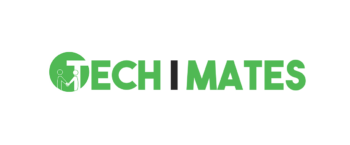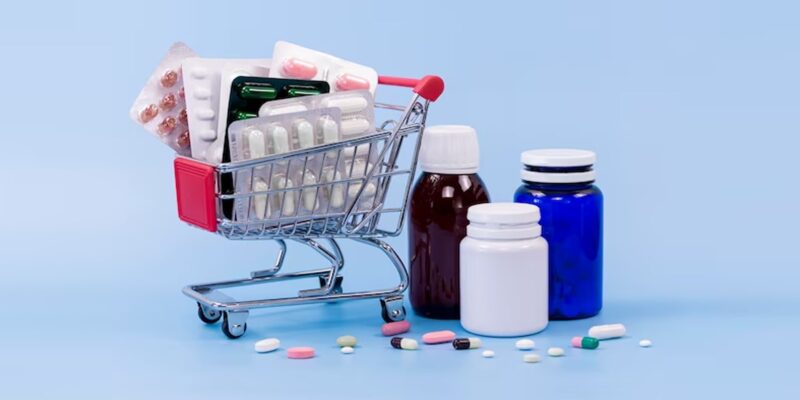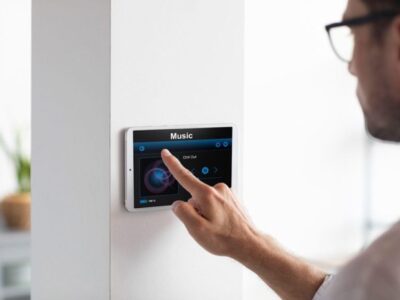1. Advanced Technologies Revolutionizing Pharmaceutical Transportation
The transportation of pharmaceuticals has come a long way in recent years, thanks to advancements in technology. These innovations have revolutionized the industry, ensuring safe and timely deliveries of vital medications and vaccines. This section will explore three key technologies that have played a significant role in transforming pharmaceutical transportation.
The Rise of Temperature-Controlled Containers
One of the most critical factors in pharmaceutical transportation is maintaining the integrity and efficacy of the products. Temperature-controlled containers have emerged as a game-changer in this aspect. These containers are specifically designed to regulate and monitor temperature during transit, protecting sensitive drugs from degradation caused by extreme heat or cold.
Temperature-controlled containers employ various cooling technologies, such as active temperature control systems, which circulate chilled air to maintain a constant temperature. Some containers even feature advanced insulation materials to provide additional protection against temperature fluctuations.
Moreover, these containers are equipped with data loggers and sensors that continuously monitor and record temperature throughout the journey. This ensures that any deviations from the recommended temperature range are promptly identified, allowing for immediate corrective action. Overall, the rise of temperature-controlled containers has significantly reduced the risk of compromised medications during transportation.
Optimizing Routes with GPS Tracking and Real-Time Monitoring
Inefficient routes and delays can have a profound impact on the timely delivery of pharmaceuticals. However, with the advent of GPS tracking and real-time monitoring systems, logistics managers now have the tools to optimize routes and ensure smooth operations.
GPS tracking enables real-time visibility of shipments, allowing logistics teams to closely monitor the progress of deliveries. By analyzing this data, they can identify potential bottlenecks or delays and take proactive measures to address them. For instance, if a truck carrying temperature-sensitive drugs encounters unexpected traffic or a road closure, alternative routes can be quickly suggested to avoid delays.
Besides route optimization, real-time monitoring also enables constant communication between drivers, logistics teams, and clients. If a driver faces any issues or requires assistance, they can immediately relay the information, allowing for prompt assistance and resolution. Overall, GPS tracking and real-time monitoring have greatly enhanced the efficiency and reliability of pharmaceutical transportation.
The Role of Drones in Expedited Deliveries
Drones have become a buzzword in the logistics industry, and their potential in pharmaceutical transportation cannot be overlooked. These unmanned aerial vehicles offer a unique solution for expedited deliveries, especially in emergency situations or remote areas with limited infrastructure.
When it comes to pharmaceutical transportation, drones offer several advantages. Firstly, they can bypass traffic congestion and other logistical obstacles, significantly reducing delivery times. In situations where immediate delivery is critical, such as during natural disasters or in rural areas lacking proper transportation infrastructure, drones can be a lifesaver.
Additionally, drones can be equipped with temperature-controlled compartments, ensuring the safe transportation of sensitive medications. By integrating GPS tracking and real-time monitoring systems into drones, logistics teams can ensure the seamless tracking and monitoring of deliveries.
While the use of drones in pharmaceutical transportation is still in its early stages, it holds immense promise for the future. With further advancements in regulations and technology, drones can become a common sight in the delivery of life-saving drugs and vaccines.
2. Ensuring Safety and Compliance in Pharmaceutical Transportation
Pharmaceutical transportation must adhere to stringent safety and compliance measures to safeguard the quality and efficacy of the products. This section explores three key aspects of ensuring safety and compliance in pharmaceutical transportation.
Strict Adherence to Good Distribution Practices
Good Distribution Practices (GDP) are a set of guidelines that ensure the quality and integrity of pharmaceutical products during transportation and distribution. Adherence to GDP is crucial to prevent contamination, maintain proper storage conditions, and prevent counterfeit drugs from entering the supply chain.
Pharmaceutical companies, along with their logistics partners, must strictly adhere to GDP regulations, which encompass various aspects such as proper storage temperatures, maintenance of records, efficient documentation, and traceability of products throughout the supply chain. Failure to comply with GDP can lead to severe consequences, including compromised product quality, regulatory non-compliance, and risks to patient safety.
Cold Chain Management: Maintaining Optimal Temperature Conditions
The cold chain refers to the management and transportation of temperature-sensitive products, including pharmaceuticals. Maintaining optimal temperature conditions throughout the cold chain is paramount in ensuring the potency and efficacy of drugs.
A comprehensive cold chain management strategy involves a combination of temperature-controlled storage facilities, specialized containers, rigorous monitoring systems, and trained personnel. From production to delivery, every step of the cold chain must be closely monitored to prevent temperature excursions that may compromise the quality of pharmaceuticals.
Furthermore, regular calibration of temperature monitoring devices and contingency plans in case of power outages or equipment failure are essential components of effective cold chain management. By prioritizing the maintenance of optimal temperature conditions, pharmaceutical companies can ensure the reliability and effectiveness of their products.
Preventing Contamination: Proper Handling and Packaging Protocols
Contamination of pharmaceutical products during transportation can render them ineffective or even harmful to patients. To mitigate this risk, proper handling and packaging protocols must be implemented throughout the supply chain.
Employees involved in the handling of pharmaceutical shipments need to undergo specialized training to understand the importance of hygiene, cleanliness, and compliance with standard operating procedures. This includes wearing appropriate Personal Protective Equipment (PPE), adhering to strict hand hygiene practices, and following proper aseptic techniques.
Pharmaceutical products should also be packaged in appropriate containers that offer protection against physical damage, moisture, light, and temperature fluctuations. Proper labeling and identification of packages are essential to ensure accurate tracking and prevent mix-ups or cross-contamination.
Implementing stringent handling and packaging protocols significantly reduces the risk of contamination, ensuring that pharmaceutical products reach patients in a safe and effective condition.
3. Overcoming Challenges in International Pharmaceutical Shipments
International pharmaceutical shipments pose unique challenges due to complex regulatory requirements, logistical considerations, and climate variations. This section explores these challenges and provides insights into overcoming them.
Customs Clearance: Navigating Complex Regulatory Requirements
Customs clearance processes vary from country to country, and complying with the different regulations can be a daunting task for pharmaceutical companies. Delays in customs clearance can result in significant disruptions and jeopardize the integrity of pharmaceutical shipments.
To navigate complex regulatory requirements efficiently, it is crucial for pharmaceutical companies to collaborate with experienced customs brokers and logistics providers who have in-depth knowledge of international trade regulations. These professionals can ensure that all necessary documentation is in order, including import and export permits, certificates of origin, and compliance with specific product-related requirements.
Additionally, leveraging technology solutions such as electronic documentation, automated customs clearance systems, and pre-clearance programs offered by certain countries can streamline the customs clearance process, reducing delays and ensuring timely deliveries.
Logistical Considerations: Efficient Supply Chain Management
International pharmaceutical shipments involve multiple stages and parties, making efficient supply chain management critical. Delays or disruptions at any point in the supply chain can have cascading effects on delivery timelines and product quality.
An effective supply chain management strategy entails close collaboration between pharmaceutical companies, freight forwarders, carriers, and other stakeholders. Constant communication, accurate forecasting, and contingency planning are essential to anticipate and overcome potential challenges.
Technology plays a vital role in optimizing logistics and supply chain management. Implementing robust Enterprise Resource Planning (ERP) systems and transportation management platforms enables real-time visibility, allowing all parties involved to track and monitor shipments, identify bottlenecks, and take corrective actions promptly.
Cross-Border Temperature Control: Overcoming Climate Variations
Climate variations between countries can pose a significant challenge in maintaining proper temperature conditions during international pharmaceutical shipments. Deviations from the recommended storage temperatures can compromise the efficacy and safety of drugs.
Pharmaceutical companies must employ suitable packaging solutions, such as insulated containers or temperature-controlled packaging, to protect products from extreme temperatures. These solutions, along with advanced data loggers and temperature-monitoring devices, help track and record temperature fluctuations during transit.
Collaboration with logistics partners that have expertise in cross-border shipping and the necessary infrastructure to maintain temperature conditions is also crucial. Such partners can provide insights into the best shipping routes, optimal transit durations, and handling methods to minimize the impact of climate variations.
4. Streamlining Pharmaceutical Transportation for Timely Deliveries
Efficient and timely deliveries are of utmost importance in pharmaceutical transportation. This section highlights three strategies that can streamline the transportation process and improve delivery performance.
Effective Collaboration with Third-Party Logistics Providers
Partnering with experienced and reliable third-party logistics providers can significantly enhance the efficiency of pharmaceutical transportation. These providers specialize in the intricacies of transportation, warehousing, and distribution, ensuring that pharmaceutical products reach their destinations in a timely and secure manner.
Effective collaboration with third-party logistics providers involves clear communication, regular performance evaluations, and mutually agreed-upon Key Performance Indicators (KPIs). By establishing strong partnerships, pharmaceutical companies can leverage the expertise and resources of these providers to optimize transportation processes and improve overall delivery performance.
Implementing Just-in-Time Delivery Strategies
Just-in-time (JIT) delivery is a strategy that aims to minimize inventory holding costs and maximize supply chain efficiency by delivering products exactly when they are needed. In the context of pharmaceutical transportation, JIT delivery can help reduce the risk of product expiry and minimize storage requirements.
Implementing JIT delivery strategies requires close collaboration between pharmaceutical manufacturers, logistics providers, and healthcare facilities. Accurate demand forecasting, real-time visibility of inventory, and efficient transportation planning are key components of a successful JIT delivery system.
Data Analytics: Enhancing Efficiency and Predictability in Deliveries
Data analytics is increasingly playing a crucial role in optimizing supply chain operations, and pharmaceutical transportation is no exception. By harnessing data from various sources, such as GPS tracking systems, temperature monitors, and customer feedback, pharmaceutical companies can gain valuable insights to improve efficiency and predictability in deliveries.
Advanced analytics tools can analyze historical data to identify patterns and trends, helping logistics teams make informed decisions on route optimization, carrier selection, and delivery scheduling. Predictive analytics can forecast potential disruptions and bottlenecks, enabling proactive measures to mitigate risks and ensure on-time deliveries.
Furthermore, real-time data monitoring and analysis allow stakeholders to respond swiftly to any deviations or incidents, minimizing the impact on delivery timelines and product quality.
Conclusion
In conclusion, efficient solutions are vital for ensuring safe and timely pharmaceutical transportation. From advanced technologies like temperature-controlled containers and drones to strict adherence to safety and compliance measures, every aspect of the transportation process must be meticulously planned and executed.
International pharmaceutical shipments bring additional challenges, including customs clearance complexities, logistical considerations, and climate variations. Overcoming these challenges requires collaboration, efficient supply chain management, and the implementation of suitable temperature control measures.
By streamlining the transportation process through effective collaboration with third-party logistics providers, implementing just-in-time delivery strategies, and leveraging data analytics, pharmaceutical companies can achieve enhanced efficiency and predictability in deliveries.
Ultimately, by embracing these efficient solutions and overcoming the associated challenges, pharmaceutical transportation can reliably and punctually deliver life-saving medications to patients in need.
FAQ
- Question: What are temperature-controlled containers? – Temperature-controlled containers are specifically designed containers that regulate and monitor temperature during the transportation of pharmaceuticals. They protect sensitive drugs from degradation caused by extreme heat or cold.
- Question: How do GPS tracking and real-time monitoring enhance pharmaceutical transportation? – GPS tracking and real-time monitoring systems optimize routes, enabling efficient deliveries. These technologies provide real-time visibility of shipments, allowing logistics teams to closely monitor progress and identify potential delays or bottlenecks.
- Question: What are the advantages of using drones in pharmaceutical transportation? – Drones offer expedited deliveries, particularly in emergency situations or remote areas with limited infrastructure. They can bypass traffic congestion and other logistical obstacles, reducing delivery times. Drones can also be equipped with temperature-controlled compartments and integrated with tracking and monitoring systems for reliable transportation of sensitive medications.
- Question: What are Good Distribution Practices (GDP)? – Good Distribution Practices (GDP) are guidelines that ensure the quality and integrity of pharmaceutical products during transportation and distribution. Adherence to GDP includes proper storage temperatures, maintenance of records, documentation, and traceability throughout the supply chain.
- Question: What is cold chain management? – Cold chain management refers to the management and transportation of temperature-sensitive products, including pharmaceuticals. It involves temperature-controlled storage facilities, specialized containers, monitoring systems, and trained personnel to prevent temperature excursions that may compromise the quality of drugs.
- Question: How can contamination during pharmaceutical transportation be prevented? – Contamination can be prevented through proper handling and packaging protocols. This includes employee training on hygiene and adherence to standard operating procedures, as well as packaging pharmaceutical products in containers that offer protection against physical damage, moisture, light, and temperature fluctuations.
- Question: What are the challenges in international pharmaceutical shipments? – International pharmaceutical shipments face challenges such as complex regulatory requirements, customs clearance processes, logistical considerations, and climate variations. Compliance with different regulations and navigating customs clearance efficiently are crucial for international shipments.
- Question: How can supply chain management be optimized for international pharmaceutical shipments? – Effective supply chain management involves collaboration between pharmaceutical companies, freight forwarders, carriers, and other stakeholders. Constant communication, accurate forecasting, and leveraging technology solutions such as ERP systems and transportation management platforms can enhance efficiency in international pharmaceutical shipments.



Comments